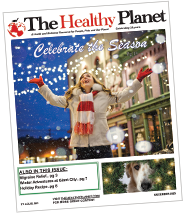By Denise S. Pott, LCSW
Assistance Home Care
Certainly falls can cause injuries, but they may also be the earliest indicator of a significant change in the health of an older adult, the harbinger of further decline. Every year, about one-third of people over age 65 experience a fall. Of these, one in five cause serious injury. Head injuries as well as hip fractures often result from falls; a full ninety-five per cent of hip fractures are sustained in this way. Hip fractures often result in a decline in function which sends many into nursing facilities and care centers. Taken together, this means that 700,000 hospitalizations take place each year as the result of falls. The cost of falls in the US is estimated at 34 billion annually, creating a huge impact on our health care system.
What causes so many falls among older adults? Research shows that there are several factors that contribute. First, are environmental factors. Throw rugs are one of the biggest hazards. Others include extension cords, uneven surfaces, slick surfaces. Somewhat surprisingly, urinary incontinence often leads to falls because the individual may be in a hurry to try to get to the bathroom and can slip in urine when there is leakage.
Other causes of falls have to do with personal health; memory loss, dizziness or poor balance, weakness, failing eyesight, foot pain, and poor judgement often contribute to falling. Falls may be the first indicator that something is wrong. They can signal anything from a vitamin deficiency to a new onset of seizures.
Not all falls are preventable, but many are. What can you do to help reduce the risk of a fall? Fall prevention programs generally begin with taking a look at the environment. Are there hazards such as rugs and cords, or perhaps clutter that presents an obstacle? Are there grab bars in the bathroom? Are there stair rails where needed, and are they in good condition? Since falls often occur on stairs, is there a way to reduce the need to traverse them, such as moving laundry facilities to the first floor, or having someone else do the laundry? Try to ensure that older adults wear non-slip shoes at all times and never walk in their stocking feet.
If you know that an older adult has fallen, they should be seen for a medical evaluation. The doctor will assess for any new illness. They should take a blood pressure reading of the patient while sitting and then standing. They may need to perform blood work, including a Vitamin D level, and possibly an EKG if there is any indication of a heart ailment. They should review the older adults medication list, to ensure that they are not taking a medication which can cause dizziness. Often the physician will make referrals for a vision exam, podiatry, and a home safety evaluation.
What other things can be done to decrease the risk of falls? Exercises to increase lower body strength, or exercises such as Tai Chi and Yoga, which improve both strength and balance. In many cases, these exercise programs are at a nearby senior center or YMCA. If not, you can always buy a DVD. The use of a cane or walker can increase stability when walking, but it is important that the device is the correct height and that the older adult has been instructed in using it properly.
Finally, since it is not possible to prevent falls completely, you may want to consider a personal emergency response system so that a call for assistance can be made in the event of a fall. Fatalities often occur when response time is delayed.
For your own peace of mind, and for the well-being of your loved one, you may also wish to consider having help in the home on a regular basis. A trained caregiver can help to spot hazards in the home and can do chores that may be challenging for an older adult, such as laundry. In addition, they can provide assistance with bathing and personal care, to help ensure safety at these vulnerable times.
If you are interested in learning more about how in-home care can help, contact Assistance Home Care at 636-724-4357.


